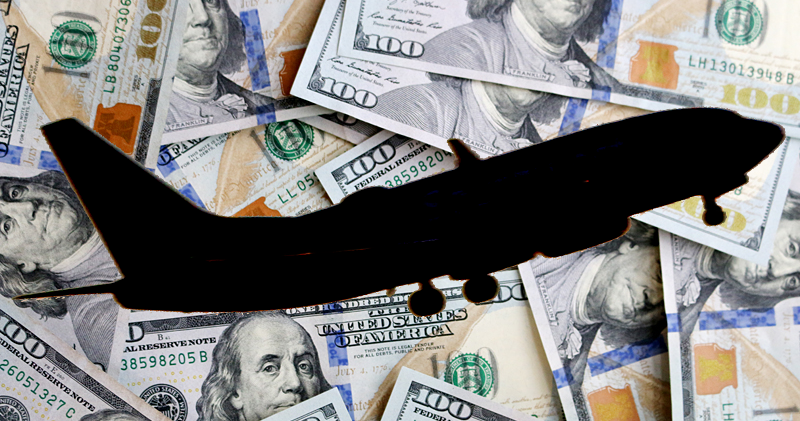“S o why isn’t a bigger chunk of these savings being passed onto travelers? This sort of thing isn’t supposed to happen — there’s supposed to be at least one company that’s willing to lower its prices and steal away its competition’s customers”, according to this article pertaining to lower rule prices written by Joe Pinsker for The Atlantic. “But that’s not what’s happening. Instead, airlines are spending their money on buying new planes and on moves that please shareholders, such as share buybacks.”
Why Is Flying Still Expensive Even Though Fuel Has Become So Cheap?
The problem with the commercial aviation industry is that it is difficult — nearly impossible, actually — to apply a definitive blanket statement in financial terms. “Jet fuel — which accounts for a good portion of airlines’ expenses—currently costs about a third of what it did two years ago”, according to Pinsker. “Yet ticket prices have been declining much more modestly, falling roughly 3 percent per quarter over the last year.” That statistic may be true on average; but frequent fliers typically know how to get better deals that less experienced travelers — so that statement might not carry much weight.
Yes, the precipitous drop in oil prices over the past year or so has led to significantly lower gasoline prices at fuel stations across the United States — even as the price per gallon of gasoline has increased by as much as 50 cents in states such as Oklahoma, where you could have bought that gallon last month for as little as $1.07 — but airfares have not decreased much…
…or have they?!?
One look at the Loyalty Traveler weblog shows many finds by Ric Garrido. For example, you can fly as a passenger on an airplane operated by China Southern Airlines round-trip between San Francisco and New Delhi for $571.00. Ric commented that “The fact that California to India is under $600 round trip in 2016 to fly half way around the world and back simply amazes me.”
Each way between Las Vegas and Philadelphia on flights operated by American Airlines would lighten your wallet by a paltry $83.10 — despite the perceived oligopoly between the airlines which remain in the United States after the industry consolidated significantly.
Even I commented about how the price for seats in the premium class cabin have decreased, using flights between Atlanta and New York operated by Delta Air Lines as an example: “Instead of current fares for that seat in the first class cabin as low as $372.20 and $404.20, I remember not too long ago when they were significantly more expensive — approximately double, if I recall correctly.”
Ah, but that example was for round-trip flights between Atlanta and LaGuardia Airport in late April, where two flights were the most expensive at $406.70. Although there is one airfare for $196.20, airfares skyrocket to as much as $750.70 for an economy class seat for a round-trip flight using that airport ten miles south known as John F. Kennedy International Airport — and on the same days. I remember the days when flights between Atlanta and either of those two airports — as well as Newark International Airport — were usually on par at approximately the same price.
Fuel Prices are Not the Only Factor Affecting Airfares
It is easy to “cherry-pick” airfares to prove a point. Yes, there are plenty of airfares that are more expensive in recent years — but there are also plenty of airfares which are less expensive as well. That is the main reason why I usually do not pay much attention to blanket financial statements: because there are usually many exceptions to the rule in both directions…
…and there is more than one factor which affects airfares. Depending on the country in which a carrier is located, the strong United States dollar can also create the illusion to an American citizen that an airfare is cheaper — even though the price may remain basically the same in local currency. Of course, that also means that many products and services in that country will seem less expensive to an American citizen as well.
In his argument, Pinsker points out that the decrease in the price of jet fuel dropped from roughly a third of the operating costs of airlines to approximately 15 percent, which greatly improves the bottom lines of the three legacy airlines and Southwest Airlines in the United States — to the tune of $22 billion in profits for 2015.
The Real Reason Why Airfares Have Not Decreased Despite Lower Oil Prices
“It’s not surprising that airlines would be slow to forfeit the gains they’ve seen from all those fuel savings,” wrote Pinsker, “but, curiously, they haven’t been lowering ticket prices very much, which would be a natural way to start trying to steal customers from one another. Even some surcharges that were concocted when times were tighter—charging customers for sitting in aisle or window seats, for instance — still remain in place. Cruelly, even fees that were originally conceived to cover fuel costs have stuck around, even if they now go by different names.”
That is not cruelty. That is the basic economic principle known as supply and demand. Due to consolidation, there are significantly fewer airlines operating in the United States these days. Pan American World Airways, Trans World Airlines, America West Airlines, Continental Airlines, Northwest Airlines, US Airways, Eastern Air Lines, Braniff, National — they are all history now…
…and with significantly fewer airplanes, there are significantly fewer seats and significantly less competition. There are also other factors which affect the price of an airline ticket…
…but none affects the price of an airline ticket more than the fact that people are paying for them. That is also the reason why ancillary fees will not disappear anytime soon. People are paying them. The airlines will stop charging higher airfares and ancillary fees when people stop paying for them. It is as simple as that.
Summary
I am not defending commercial airlines for keeping airfares higher — that is, wherever they are higher — despite lower fuel costs. Airlines are not charities. They engage in a free market system; and as long as customers pay the airfares and fees for ancillary products and services, the airlines have no reason to reduce prices. Customers may grumble and complain; but as long as they keep paying, the airlines will keep charging — and profiting handsomely. Be honest: would you reduce airfares if you owned a commercial airline and you were raking in the profits?
As I indicated earlier in this article, fuel prices are rising — and significantly within a short period of time. When fuel prices skyrocketed some years ago, airlines started adding fuel surcharges to the price of an airline ticket — to the point of hundreds of dollars extra in egregious cases — and in many cases, fuel surcharges did not disappear when the price of oil dropped substantially. Rather, the name was changed to the nebulous moniker of carrier-imposed surcharge.
If fuel prices keep rising, what do you think are the chances that we will see the dreaded fuel surcharge return to the cost of airline tickets — alongside its predecessor known as the carrier-imposed surcharge?
I would not put it past the airlines to do just that — simply because my trust in them is not nearly as strong these days…
Photographs and composite image ©2016 by Brian Cohen.

